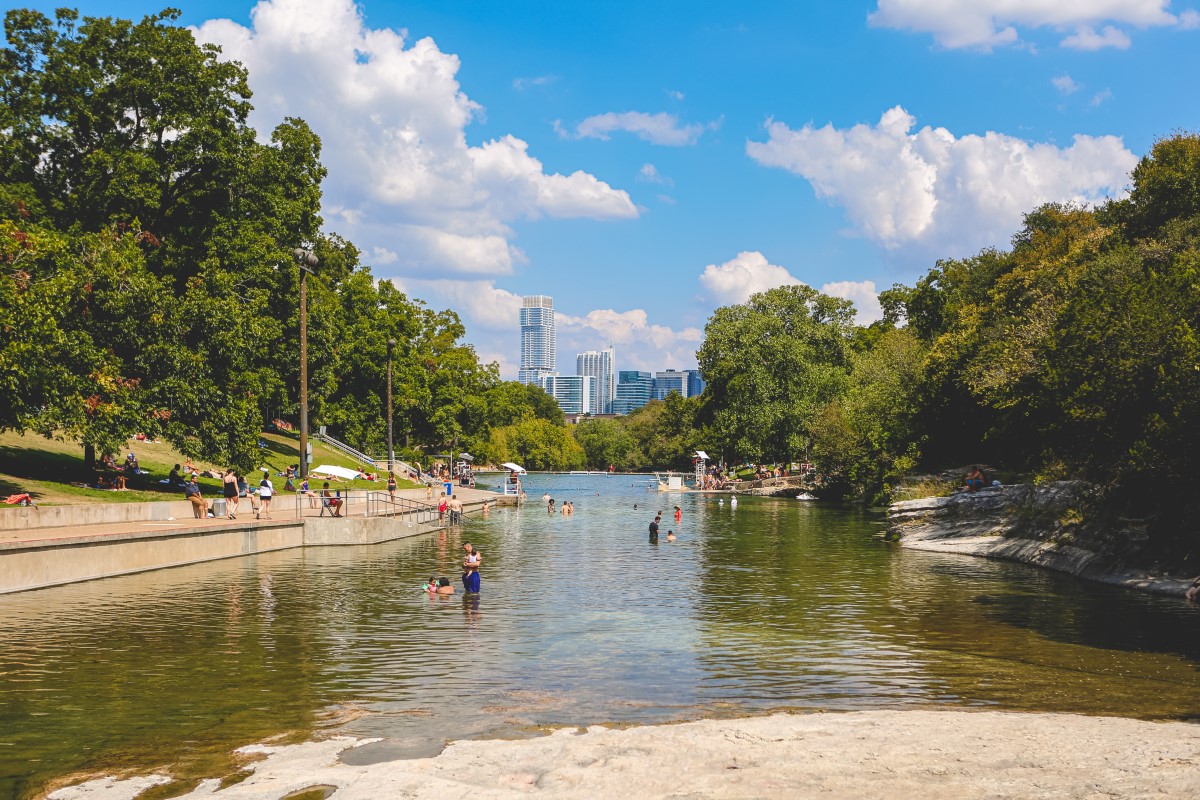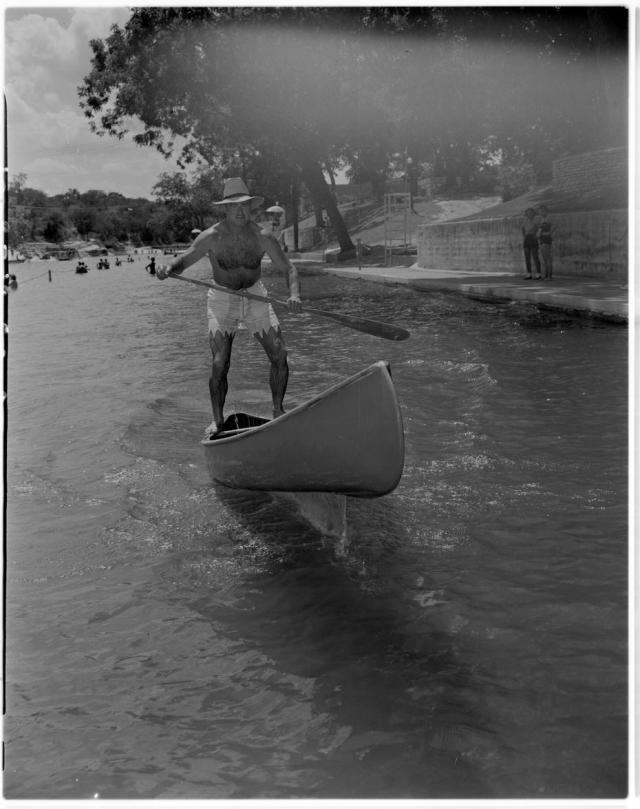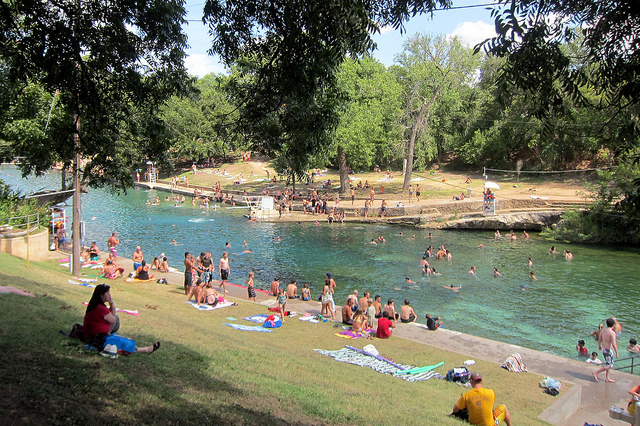
Three years into the Texas secession from Mexico, the Republic’s leaders sought a new town to be the seat of government for the United States. Mirabeau B. Lamar, the 2nd President of Texas, loved Barton Springs. The green space’s cold water creek ran through the small frontier town of Waterloo. Surrounded by lush greenery, this group of springs was considered very beautiful. The capital selection committee considered it “the greatest and most convenient flow of water to be found in the Republic.
The spring played a big part in turning Austin into the capital of Texas. Over 800,000 people visit the 900-foot long pool area every year. It’s not hard to see why. The water temperatures are around 68 degrees year-round. This is because of the damming of the creek that keeps pumping cool flow into the remnants of the Republic’s prized swimming hole. There have been many updates since 1901. These modernization projects have transformed this brutal wonder into the three-acre semi-natural pool we know today!
Early History

For thousands of years, springs near Zilker Park were considered sacred lands by the Tonkawa tribe. Purification rituals in the area that’s now downtown Austin were performed by the group. The creek was believed to have healing properties too. This is why the tribe would bathe in the water to nurse battle wounds.
When the European Americans arrived, a new chapter in Texas history began to unfold. They started to form the Republic of Texas. Sam Houston and Mirabeau B. Lamar were divided when it came to naming the town. Houston wanted it named after him and Lamar argued to keep the name of Waterloo because of the springs. Lamar was good friends with William Barton who owned the land close to the town. It was home to the cool springs named after his daughters Parthenia, Eliza and Zenobia. Lamar and his staffers travelled to the area to see the springs. After he went missing, herds of buffalo were used to find him.

In 1901, Wealthy ice manufacturer A.J. Zilker purchased the land between the Colorado River and Barton Creek. This included Barton Springs, which he used to pasture his horses that transported shipments of ice. Zilker built a small concrete pool and amphitheatre for lodge members at Eliza Spring. It was designed based on Roman bathhouses, but its construction was considered more dangerous. This was because there were so many Barton Springs Salamanders. Zilker was the last private owner of the springs. He donated the land of the banks to the Colorado River to the Public Free Schools of Austin in 1917. It was bought shortly after by Austin Parks & Recreation for $100,000 as per the terms stated by Zilker.
During the 1920s, the city began to create a larger swimming area by damming the springs and building sidewalks.
Barton Springs Today

Nowadays, people call the springs the “Soul of Austin. On a hot summer day in the Lone Star State, you’re certain to see long lines. They only get longer on Saturday afternoons! The long pool at Main Barton Spring has been a staple of Texas childhood for generations. Even actor Robert Redford remembers learning how to swim in the spring when he was 5 years old!
Barton Springs was added to the U.S. National Register of Historic Places in 1985. To preserve its rich history, the City of Austin is in the midst of a master plan to restore and maintain the water quality at Barton Springs Pool. It is susceptible to impurities from storms. The city is also renovating the Sunken Gardens and historic structures such as the bathhouse.
Rare Salamanders
The Barton Springs salamander is a rare reptile only found in the springs. They are about 2.5 inches in length and have colours that range from dark purple to light yellow. They were added to the Federal List of Threatened and Endangered Species in 1997. Austin Parks & Rec no longer use bleach to clean the pool, which they previously did for over 70 years. The salamander tends to feed on small crustaceans. The Incidental Take Permit by the U.S. Fish and Wildlife service allows for temporary removal during cleaning. Today, 10% of revenue from the pool’s entry fee goes towards research and habitat enhancement.
If you and your child want to have some fun in Texas’s favourite swim hole, why not check out private swimming lessons right here in Austin!

